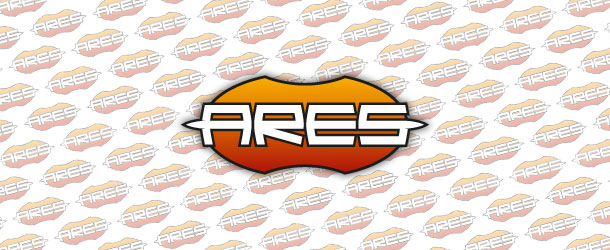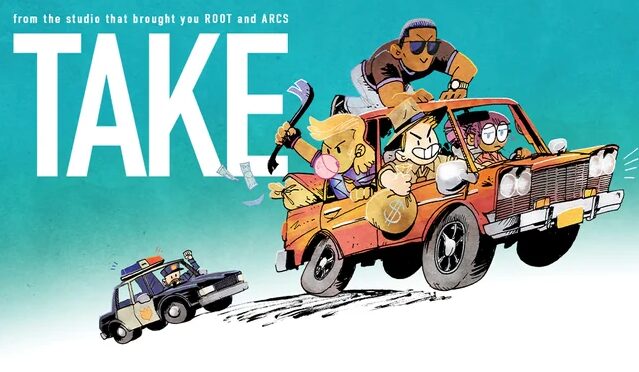
Flamecraft designer Manny Vega on quitting his 20-year video games career to make board games his “forever home”
Flamecraft designer Manny Vega has been working in the video game industry for more than 20 years, most recently on Electronic Arts‘ first person shooter Immortals of Aveum. But a lukewarm response to that release left him in a distressingly familiar situation – unemployed, and facing the prospect of hunting for work in what he describes as a “volatile and toxic” industry. Video gaming’s loss is set to be board gaming’s gain, however, with Vega turning his focus to tabletop as he looks to make the industry his “forever home”. BoardGameWire caught up with Vega to find out his game design and illustration plans – and his work on Flamecraft’s successor – for 2024 and beyond.
Manny, we’re so sorry to hear you were made unemployed from your video game job. What happened? That industry seems to be in a really bad patch for redundancies at the moment?
I was working for a remote based contract company called TLM partners, and we had wrapped up The Immortals of Aveum for Ascendant studios, published by EA. Needless to say that the game did not do well, and Ascendant studios did not fare well either, so there was no more contract there for us. TLM was looking for new contracts furiously, and we made a bunch of designs and proposals over the last six months, but the industry has been dead. Many big studios are closing down, much less contract studios. There was a lot of over hiring during the pandemic, but it seems like there are less and less successful games being made and more longer lasting games that people seem satisfied with. Over the past 10 years it’s basically been Minecraft, Roblox and Fortnite at the top of the heap with a few big-name sequels making some splashes.
You mentioned this has happened before too. What about it this time made it the last straw for you with video games?
For me this has just happened too many times, you pour three to four years into a project, work long hours, give everything you got… and at the end they still let you go or worse, the company goes under. It’s heartbreaking. Honestly, the remote work was fantastic for the last four years and it probably sustained my career much longer than I would have otherwise been able to going into the office. Now that companies are pulling back from offering remote work, I seriously can’t justify the loss of family time to be sitting in traffic just so I can sit in front of a computer all day in a different place.

I would work in the industry again if there was a project I had some actual stake in. I would love to turn one of my board games into a digital game some day, or be able to deliver a similar tabletop-like experience in a digital format. Smaller games that could be turned around in months to a year that didn’t need to be blockbuster games. Sadly, these kind of games often are required to be free-to-play to even stand a chance, and that just opens a whole other can of worms I’m not sure we have the time to get into. Hah!
Video gaming’s loss is most definitely board gaming’s gain! You mentioned you’d like to make tabletop your ‘forever home’ – what is it about the industry that’s attractive to you, compared to video games?
The easy answer to this is that tabletop is smaller. Usually a designer, a developer and an artist. If there are more people, it’s not usually an auditorium sized meeting required to figure out the next steps. I’m also a graphic designer originally, so tabletop let’s me play around with layout and presentation in ways that video games have long since left behind. I mean, UI is important for all game design, but in tabletop games it’s tactile and physical, you print things out and play them on the table to see what it looks like and how it reads. I just can not stress enough how different it feels to blend gameplay and theme with the presentation in a game design, and with board games I get to experience all that myself.
I’m sure plenty of our readers will be familiar with you as the designer of Flamecraft. But you’ve been working on tabletop games since 2017, right?
Yeah. My first published game was called Sparkle*Kitty, with Breaking Games. I wanted my first game to be something I thought I could handle, so I focused on a lightweight family card game. I think lots of people have big and bold ideas for games they have been working on for years, but when it comes down to getting something made I wanted to understand what I was getting into first. I’m SO glad I did because while Sparkle*Kitty did well and had a bunch of expansions, I learned a whole lot about costs, shipping and marketing that would serve me well later on when thinking about Flamecraft. Not only that, but pretty much everyone I met while out there selling copies of Sparkle*Kitty was someone I would learn from, work with and/or become friends with.
How did you make the jump from Sparkle*Kitty and its related games to designing Flamecraft?
That’s a two parter. First thing that happened was that I found [artist Sandara Tang] while I was looking for someone to draw a dragon for the Sparkle*Kitty Nights expansion. I noticed that every amazing dragon image I had saved as reference was basically drawn by her, so I took a chance and contacted her, and we ended up getting two dragons from her for that game. After that, I followed her on Instagram and eventually saw the post about the creme brulee dragon she did, and decided to contact her again and see if she would be interested in making a game. She was actually too busy at the time, so we put a pin in it and I completed Shadow*Kitty for Breaking Games, around the time that Peter Vaughan left the company to form Cardboard Alchemy. I think it was almost a year later when I saw Sandara make another post with more cute dragons that I decided to ask her again, and this time everything lined up. Cardboard Alchemy was looking for their next game after Mission Catastrophe and Sandara and I put together a proposal using the dragons she had already drawn and a half baked idea I had about a shared engine builder.

When you asked before about why I love about the tabletop industry, it’s this scenario right here. I have a notebook with a bunch of crazy ideas, some thought out and tested while others are the ravings of a madman. Sandara didn’t really know me, but I think she liked my enthusiasm for her characters and I like to think something sounded like fun (you’d have to ask her). Cardboard Alchemy was just getting started and willing to take a chance on something like this, and it all came together to create something wonderful.
You mentioned you have a couple of games lined up for 2025 – are they already with publishers, or are you currently pitching those?
Sandara and I have signed with The Op Games and we are “brewing up” something super amazing for 2025. I can’t get into too much detail just yet, but I’m really excited to be working on another project with her. We just really work well together, I have these crazy ideas and she just makes it all look normal and beautiful. If you know anything about us, you might have already seen some tasty rumors about it.
Can you give us a sense of what designs you’re currently working on? And is an expansion for Flamecraft, or a successor title, in the works?
I have been working on the successor to Flamecraft since the end of the Kickstarter campaign, no joke. As you can imagine, the success of the campaign has changed a lot of the original plans for the game, and many of the possible expansion ideas just become stretch goals that we blew past. There have been quite a few different ideas pitched, tested, reworked and abandoned since then, but I think we are close to its final form. The brand has taken on a life of its own and it demands a lot from all of us at this point, as do the fans. I want to make sure that it remains true to my original concept of a fun and friendly game that people will love to have on their table. At the same time, we want to offer something fresh and new to keep everyone happy and playing for years to come.
I am also working on a co-design with my friend Ammon Anderson, designer of Gnome Hollow, and ironically this game will be about 80s arcade games, getting the high scores and almost certainly smashing your friends. This one is shaping up real fast, and [we’re] definitely looking to sign it later this year.
I’ve also got a pair of games in development with my friend Scott Rogers, designer of Alien: Fate of Nostromo, Pantone the Game and many more! I can’t talk too much about these yet, but they involve some amazing figures and props that we had to have 3D sculpted by a professional to even conceptualize, so I think they are going to blow some people away when they see them.
What kind of role are you hoping to pick up in the industry – are you looking for an in-house design position, would you rather freelance as a designer, or something else?
My ideal role is Creative Director or Art Director. My love and passion has always been art and graphic design, I think that’s what I bring to my game design more than anything else. I think I have a great rapport with artists in general and being able to bridge the gap between game designers and the theme they wish to present is very important. I would say that all my games not only have wonderful artists attached, but tying the design, UI and theme together into one package is what really grabs people’s attention and holds on. I’d love to bring this to a publisher that agrees with this concept and supports going all in on projects that bring game designers and the artists together to create fun experiences.
At the same time, I probably have a bunch more game designs in me as well, so as long as I have the room to do that for the publisher or on my own, I’m a happy camper.
You’ve also been an artist on several tabletop game projects – is that something you’d like to do more of, or do you primarily see your future in game design?
My current plan is to work as a graphic designer and game designer. Whatever pays the bills. Ideally, I will always be playing with fonts and designing fun icons and tokens, or writing narratives to bring the theme into a game I am designing. As long as I am creating, I can be happy. I just need to be making new things since the notebook keeps growing with ideas. Hopefully the stars will continue to align and I can keep making sparkly-magical-crafty-fun games.





